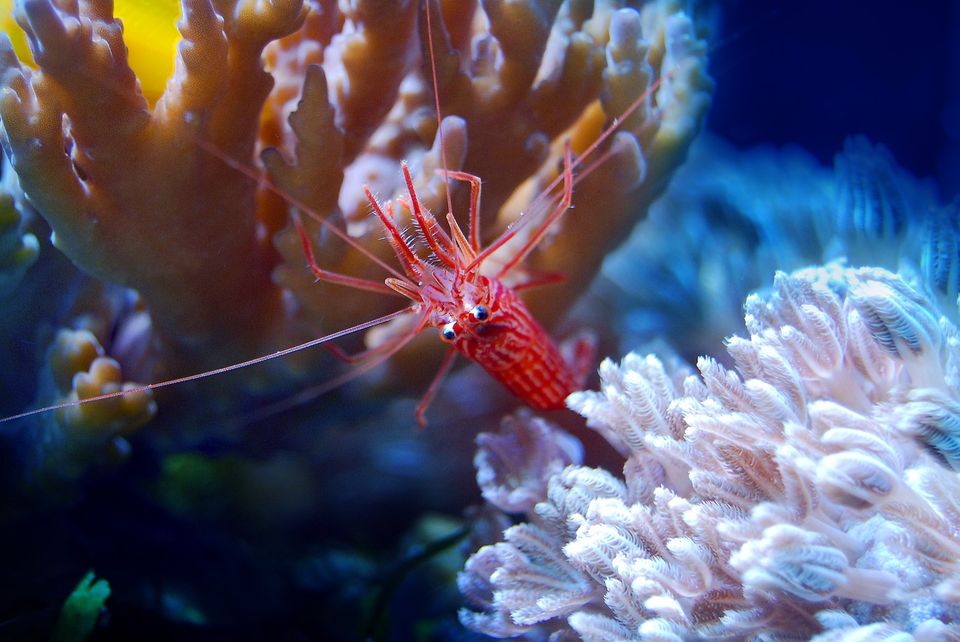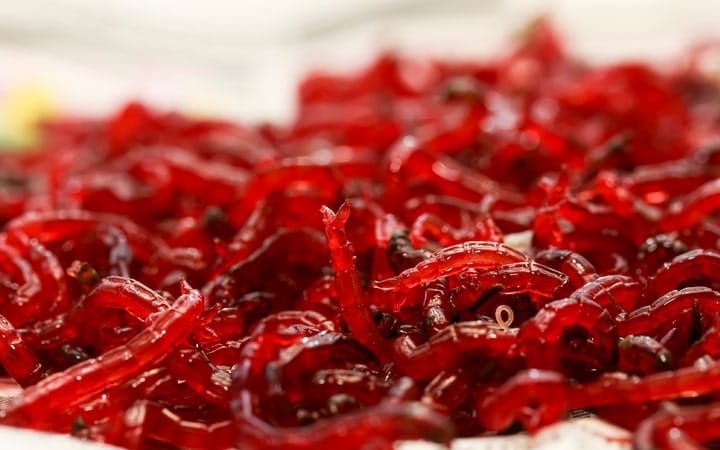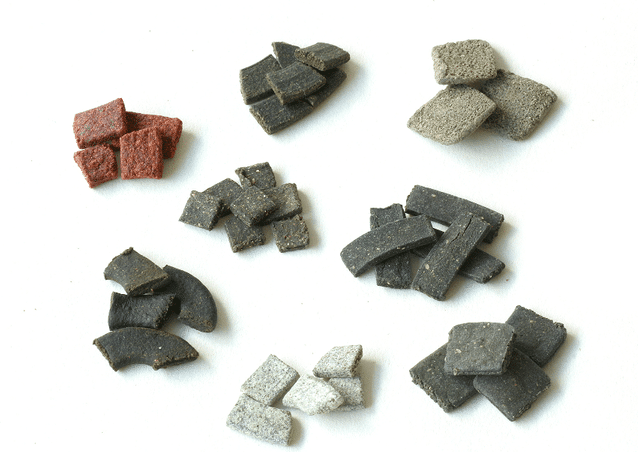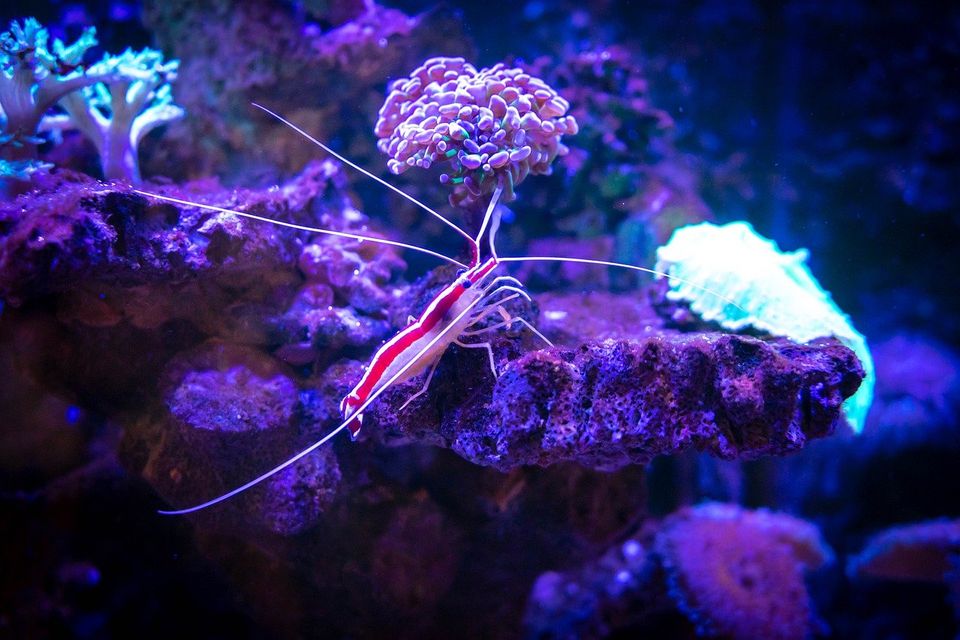We all would agree that shrimp is one of the most popular crustaceans in the aquarium trade. Not only do they have a unique appearance, but some can even help you maintain the tank condition.
Besides, we also often find ourselves enjoying them as a meal. But have you ever wondered what do shrimp eat?
Perhaps you know that they will devour almost everything they come across. Detritus, algae, as well as dead plants and animal matter, help them to survive. However, some types of shrimp require a different diet.
In this guide, we will go through all the important stuff about what you can feed your shrimp. We mainly focus on freshwater shrimp, but we’ll also give you some sneak peek about what saltwater shrimp eats.
Without any further ado, let’s jump right in!
Table of Contents
What Do Shrimp Eat?
Shrimps are natural scavengers, and most of them are omnivorous. They take in everything they can reach and fits into their mouths. This crustacean won’t be a picky eater even in captivity.
As an omnivore, shrimp eats various foods that include plants and meat. Their diet consists of algae, animal protein, decaying plant matter, and even other dead shrimp. They will also clean the leftover fish food in the tank. However, some particular shrimp species do require different foods than other types of the same family.
When deciding on what to feed your shrimp in the aquarium, think about what they eat in nature. Of course, you can provide them a slightly different diet from their usual food in the wild. But that’s only to add some varieties to the menu. Other than that, they still require similar nutritional needs as in their natural habitat.
Shrimp’s Diet in the Wild

In their natural habitat, shrimps inhabit freshwater lakes or rivers with shallow bottoms and high oxygen levels. Keep in mind that our focus in this guide is the freshwater shrimps, although we will discuss a bit about the saltwater ones as well.
Shrimps are bottom-feeders, and they love to forage on the river beds. Generally, they will scavenge for detritus, dead organic matter, and other tiny critters. Everything organic and smaller than them is a meal.
As for why they prefer shallow waters, that’s because it’s more convenient for the shrimp to feed on algae. Algae are floating in the water. It’s easier to devour the algae even when they just casually swim.
When they run out of decaying plants or algae, shrimp will snack on live plants. However, their mouths are so small that they barely tear the live leaves, let alone destroying them.
Due to their small mouth size, they also eat plankton, tiny dead fish, and bacteria. Usually, shrimp of bigger size don’t eat those stuff, but the smaller shrimp ones will gladly take them.
Fun Fact: Shrimps need to molt periodically. Molting means they shed their tight exoskeleton that protects their delicate body and begin to grow a new, bigger one that fits their current body size. Adult shrimp molt every 1 to 1.5 months, while the juveniles molt every 4 to 10 days. The newly grown shell takes a few hours to harden. During this time, shrimp are prone to be a target of predators, including other shrimps. As a crustacean, shrimps are notorious for eating their counterparts. So, when a shrimp is molting, the other might be already preying on them since they are more vulnerable.
What To Feed Freshwater Shrimp
Freshwater shrimp that you can keep in your house tanks are generally not picky eaters. They require plant-based food with an addition of animal protein and will devour anything available. As a shrimp-keeper, you need to support your pet’s well-being by fulfilling their nutritional needs. Here are a few foods you can feed your shrimp to keep them healthy and thriving.
Algae
Algae is the number one food source for shrimp in the wild or tanks. Green algae are rich in vitamins and proteins, which are great for shrimp’s well-being.
Therefore, it is strongly advisable to add shrimps only into a mature tank that already has green algae inside. There won’t be sufficient food supply if you put them in a newly established tank.
Shrimps only eat green algae and won’t touch the brown ones. Still, they can help you keep the water environment clean since they will keep nibbling on the algae almost 24/7. Red Cherry and Amano shrimps are two incredibly famous species to be housed in tanks that do this.
The algae are, however, not unlimited. If you notice your shrimp swimming back and forth restlessly, it is a sign that there are no more algae left in the water. In that case, you need to give them supplementary foods.
On the other hand, you may also see them slacking off without eating any algae. This means you provide them too many other delicious foods. To fix that, you need to skip giving them meals for a day or two so that they go back to their algae-eating routine.
Veggies
There are numerous vegetables that you can feed to your shrimp. You can try giving them spinach, broccoli, okra, sweet potato, zucchini, kale, or carrot.
But before throwing the veggies in the tank, there are some preparations you need to follow.
First, you need to peel the skin of the veggies clean (like zucchini, sweet potato, and carrot). Peeling the veggies’ skin helps prevent possible pesticides enter the water. Then, cut them into thin slices, around ½ inch or even smaller.
Once you have cut the veggies, put them into boiling water for around two or three minutes. You can then take the veggies out and place them in a bowl of cold water to stop the cooking process. This method will break down fibrous vegetables so that it’s easy for the shrimp to eat them.
You can feed your shrimp veggies a few times a week. It’s also okay to leave a piece of vegetable in the tank overnight. But make sure to remove the leftover food in the morning.
Fresh or Frozen Meat-based

Shrimps are omnivores. They need meaty food as well as plant-based food. But don’t feed them meat-based food too often as it will give them too much protein.
Once or twice a week, you can feed your shrimp frozen foods such as daphnia, bloodworms, or baby brine shrimp.
Blackworms and tubifex are live foods that can be difficult for some shrimp to catch. Also, they might not be ideal for shrimps of smaller sizes.
Cuttlebone
It’s a bit different from other foods because you will find this in the bird section in pet stores. Even so, you can offer it to your shrimp by cut it into small pieces and place it in the bottom of the tank.
Cuttlebone is composed of almost pure calcium carbonate. It can be the dietary calcium source for shrimps. Cuttlebone is undoubtedly beneficial since shrimps need calcium to promote their shell growth.
Leaf Litters
Putting dried leaves in the tank helps to mimic a shrimp’s natural habitat and can also be the shrimp’s source of meals. As the leave decomposes, harmless bacteria and microorganisms (Infusoria) will grow on it. It also releases antifungal and antibacterial nutrients, which the shrimps love.
One usual recommendation to purchase is Indian Almond leaves. The leaves have anti-inflammatory and antimicrobial properties. Besides, they have broad surfaces so that the shrimp can graze upon them.
But you can also collect dry leaves from your garden. However, it’s not advisable since the leaves can contain pesticides, fertilizers, or parasites.
Commercial Foods

This one is the least recommended food for shrimp by many people. Much store-bought shrimp or fish food are mostly animal protein-based. That’s because the ingredient is cheaper than algae or spirulina.
If you’re looking for some commercial shrimp food in the store, choose the ones that are mostly plant-based. You can then add meat-based food once a week as a supplement.
Bonus: Bamboo and Vampire Shrimp Feeding
These two are unique and a bit different from other shrimps. They don’t eat algae or biofilm as their primary nutritional source, nor are they cleaners. The bamboo and vampire shrimps are the so-called filter feeders.
They have a pair of specialized fan-like limbs full of bristles to filter out floating food particles. Their diet includes baby brine shrimp, daphnia, other live and frozen foods, plankton, and powdered flakes.
If you have bamboo shrimps in your tank, you can see them fighting each other (sometimes) for the best feeding spot. Usually, they will gather on rocks, driftwood pieces, or plants near the outflow pipe of the filter. There, they catch their food as it drifts along with the water current.
While the bamboos are getting their foods in a colony, the vampire shrimp is not as social. They are nocturnal, which means they are busier at night and prefer to feed alone, away from the crowd.
Bamboo and Vampire shrimps will also eat sinking pellets or flakes. But it’s always more fun to see them being active in their natural behavior. In that case, you can put their food in the water current directly.
Saltwater Shrimp Diet

Just like their freshwater counterparts, most marine water shrimps are omnivores. Again, their diet consists of vegetable matter with some meaty food. Ocean shrimps usually eat algae, dead organisms, plankton, and small fish. However, some shrimp might eat a bit differently than others.
Pink Shrimp
This saltwater creature is also called green shrimp, pink spotted shrimp, or pushed shrimp. Pink shrimp can reach the size of 8 inches, which is pretty big. Well, at least for a shrimp.
In the oceans, pink shrimp’s diet consists of algae, small mollusks, molds, diatoms, yeast, decaying plants, and bacterial films. To find food, they will stir around the ocean beds and use their feelers to smell and find the location of their prey.
Pacific Cleaner Shrimp
As the name suggests, this creature gets its food by cleaning other fish. They love to stay in a shelter, usually coral outcroppings and rocks, rather than skimming around.
The pacific cleaner will wave their antennae to attract fish that are passing by their cleaning station to get their food. Once the fish stop, the cleaner shrimp will hop onto the fish’s body and begin to clean. The shrimp will then pick on the fish’s loose scales, dead skin, and parasites that are attached to them.
Sometimes, the cleaners even get into predators’ mouths to clean the bits of food stuck in their teeth!
Although their diet consists primarily of meaty food, the cleaner shrimp also take plant-based food occasionally. Some easy plant matter for them to find are algae and plant detritus.
Fun Fact about The Pacific Cleaner Shrimp: All cleaner shrimp start as a male. As they grow, they become hermaphrodites.
Baby Shrimp Diet
Before baby shrimps turn into juveniles, they must go through the larval stage. During this stage, they are not fully developed yet and not able to swim around to scavenge. What they do is only float in the water.
Therefore, they can survive solely from eating plankton and algae that float close to them. In captivity, shrimp larvae usually eat infusoria and floating algae.
Shrimp grows pretty quickly. So it won’t be long before you need to prepare food for them. Once they develop into teenage shrimp or juveniles, you can start feeding them specialized food.
One important thing to remember is that the food needs to be in powder form. You can find some commercial foods that are suitable for juveniles easily in fish stores. The food needs to contain minerals, vitamins, omega 3 fatty acids, and protein.
More Useful Information
How do shrimp eat?
Shrimp comes in different sizes ranging from microscopic to 18 inches long. Regardless of their size, shrimps are delicious meals for other water creatures.
For that reason, they have appendage mouthparts that they use to pump water and hold their food.
On the shrimp’s front body, they have a few leg appendages called maxilliped or jaw feet. Those front legs have claws which they use to pick the food and bring it to their mouths.
Shrimp only eat food that they can easily digest without chewing them beforehand.
Do saltwater shrimp eat seaweed?
Short answer, yes. But it’s not common for shrimp to eat seaweed since it’s not always available on the bottom of oceans. Also, it’s not in their diet.
However, if they happen to find seaweed that is still in good condition (untouched by other creatures), they might take it.
How often do shrimp eat?
Shrimp will always be in search of food. They will eat when they feel like they need to refill their energy to go through the day. That’s why you may notice your shrimp roaming around the tank almost all day long unless they are nocturnal.
However, they don’t need to eat all the time. Due to their small bodies, shrimp can survive even when they only eat a couple of times in a week.
Closing
Shrimps are natural scavengers and will happily eat anything available. In their native water bodies, they can casually swim around and pick whatever food they see. That means you don’t need to stress about what to feed your shrimp in the tank.
A friendly reminder to only add shrimps into a mature tank that has plenty of algae in it. Algae is shrimp’s primary food, and you can add other supplementary foods like veggies or commercial food to keep them in their optimal condition.
Keeping some shrimps in the aquarium can be a good idea because not only do they light up the mood in the tank, they also help you control the number of algae in it.
We hope this guide is helpful, and we wish you a wonderful shrimp-keeping journey!






